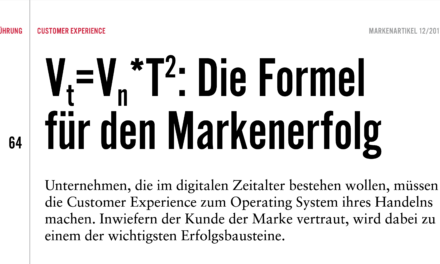Exceptional customer experiences rarely happen by accident. They require a coordinated effort across multiple functions—marketing, sales, product, IT, customer service, operations, and more. Yet in many organizations, these departments operate in silos, with little communication or collaboration. This fragmented approach leads to disjointed customer journeys, missed opportunities, dissatisfied customers, and frustrated employees.
To deliver seamless, memorable experiences, companies need a holistic approach. This means creating an “experience operating system” (XOS), a framework that aligns all functions, fosters collaboration, and ensures every team is working toward the same goal: putting the customer at the center. Achieving this requires clear governance, well-defined roles and responsibilities, effective communication, and a culture of mutual problem-solving. Breaking down silos is not just a prerequisite for better customer experiences—it’s also critical for improving employee satisfaction and engagement.
The Problem with Silos
Silos are necessary. They follow from the logic of the division of labour. However, organisational silos create barriers to exceptional customer experiences. When teams operate in isolation, customer journeys become fragmented. Inconsistent experiences across channels or touchpoints can confuse and frustrate customers, while internal inefficiencies often result in missed opportunities.
For example, when marketing, sales, and support teams fail to share insights, brands lose the ability to personalize interactions or identify cross-selling opportunities. Even resolving customer issues can become unnecessarily complex when input from multiple departments is required but processes for collaboration are unclear.
Silos also frustrate employees. Working in isolation often means unclear expectations, duplicated efforts, and a lack of recognition. Employees feel disconnected from the larger organizational mission, leading to disengagement and turnover. The disconnect between departments and functions is not just bad for customers—it erodes internal morale and productivity.
Building an Experience Operating System (XOS)
An XOS aligns all organizational functions to deliver a unified customer experience. It provides the structure, processes, and culture needed for seamless collaboration and customer-centric execution.
- Clear governance as backbone
Senior leadership must champion the importance of customer experience, ensuring it is a strategic priority. A dedicated CX leader or team should oversee the entire customer journey, aligning teams and facilitating collaboration. Shared metrics, such as Net Promoter Scores (NPS) or customer retention rates, help focus efforts on outcomes that matter to customers and align the work of all functions. - Defined roles and responsibilities
When every department understands its part in the customer journey, confusion is reduced, and collaboration becomes smoother. Marketing takes responsibility for brand communication and attracting customers, while sales focuses on conversion and smooth transitions from leads to long-term customers. Customer service ensures issues are resolved and feedback is captured to improve future interactions. IT provides the technological backbone for seamless experiences, and operations ensures processes are aligned to deliver consistent quality (‘seamless journey’) - Well-structured processes and feedback-loops
Establishing regular feedback loops ensures customer insights are shared across teams, allowing for continual improvement. Mapping the customer journey with input from all relevant departments helps identify pain points and streamline touchpoints. When crises arise, clear response protocols that bring together the necessary expertise help minimize disruption and maintain customer trust. - Fostered communication and teamwork
Shared digital workspaces allow teams to collaborate in real time, while regular cross-functional meetings create opportunities to share progress and brainstorm solutions. Empowering employees to take ownership of their contributions to the customer experience fosters engagement and a sense of purpose. - Purposeful use of data and technology
Unified customer data platforms (CDPs) consolidate information from multiple sources to provide a single view of the customer. Predictive analytics and AI help anticipate customer needs and inform proactive interactions. Automation streamlines processes like ticket routing and personalized marketing, reducing friction for both employees and customers.
Why it won’t work without breaking down the silos
Implementing an XOS brings significant benefits for both customers and employees. For customers, a unified approach ensures consistent experiences across all touchpoints, greater personalization based on shared insights, and faster resolution of issues. For employees, it creates clarity by defining roles and goals, reduces frustration by eliminating redundant efforts, and fosters a sense of shared purpose by encouraging collaboration. Engaged employees are better equipped to deliver exceptional customer experiences, creating a virtuous cycle of satisfaction and loyalty.
Challenges and How to Overcome Them
Building an XOS isn’t without challenges. Resistance to change is one of the biggest hurdles. Employees and leaders alike may be hesitant to adopt new ways of working, particularly in organizations where silos are deeply ingrained. Clear communication about the benefits of breaking down silos—both for customers and employees—is essential. Leadership must actively support these efforts, and training should be provided to help teams adapt.
Data silos also present a significant obstacle. Many organizations struggle with fragmented systems that prevent a unified view of the customer. Investing in tools that integrate data from different sources and establishing clear data governance protocols can help address this challenge. Without a complete and accurate picture of the customer, efforts to improve the experience will fall short.
Securing leadership buy-in is another critical factor. Without strong support from senior leaders, silo-busting initiatives are unlikely to succeed. Presenting a compelling business case that highlights the ROI of improved customer experiences can help gain their commitment. Quick wins—such as resolving a persistent customer pain point—can also demonstrate the value of a holistic approach and build momentum for broader changes.
From silos to symbiosis
Exceptional customer experiences depend on more than just individual effort—they require organizational synergy. By implementing an experience operating system (XOS), companies can align teams, streamline processes, and foster a culture of collaboration. Breaking down silos not only improves outcomes for customers but also enhances employee satisfaction by providing clarity, recognition, and a shared sense of purpose. In a world of rising customer expectations, the ability to work together effectively is no longer optional—it’s essential.
Creating an XOS takes time, effort, and commitment. But the payoff is undeniable: happier customers, more engaged employees, and a stronger competitive edge. By focusing on collaboration and shared goals, organizations can move from fragmented interactions to seamless, memorable experiences that build lasting loyalty.





